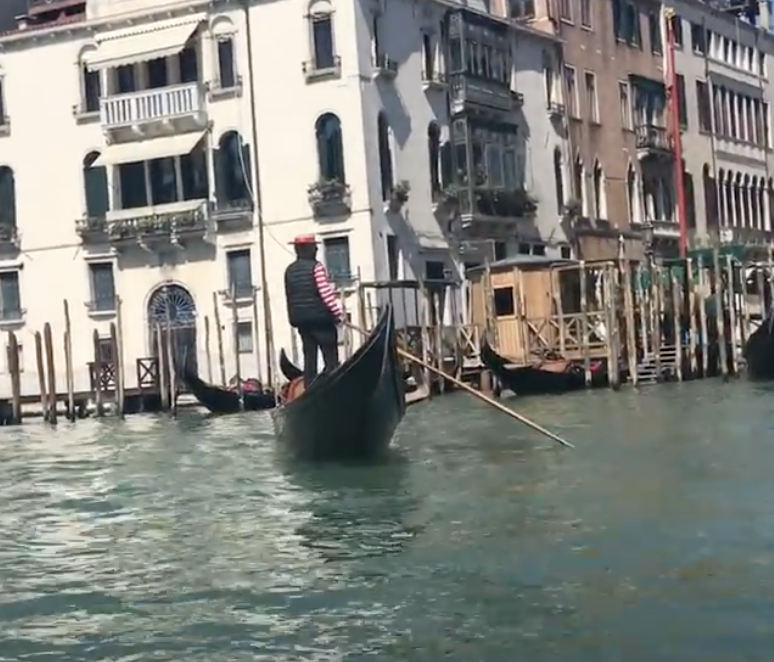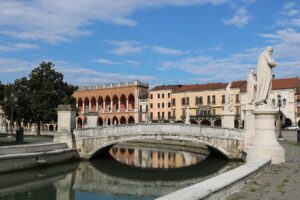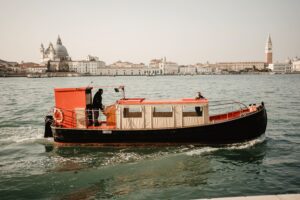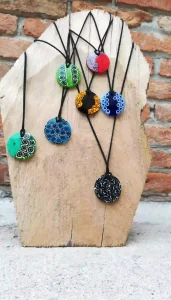There’s a particular kind of silence that falls over Venice in the early morning — before the first tourist groups spill onto the bridges, before the espresso machines hum in every bar. Locals move quietly then, in a rhythm the city still remembers: the fisherman heading to the market, the baker opening the shutters, and the elderly woman balancing her shopping bag as she steps onto a wooden gondola ferry — the traghetto.
To most visitors, it looks like a simple boat. But for Venetians, the traghetto is a tiny piece of daily life — one of those humble, ancient rituals that make the city work. Until recently, it was our secret. Now? It’s TikTok famous.
⚓ What Exactly Is a Traghetti?
Long before Venice became the world’s most photographed city, it was simply a maze of islands, canals, and necessity. The traghetti — plural of traghetto — were born from that need: gondola ferries that carry people across the Grand Canal at points where there are no bridges. No frills, no singing gondoliers, no velvet seats. Just a quick hop across the water, usually standing, for €0.70 if you’re local — or €2 if you’re a visitor.
There are only a handful of traghetti routes left today — Santa Sofia near the Rialto Market, San Tomà, Punta della Dogana — each one operated by pairs of seasoned gondoliers who spend their days rowing back and forth, keeping the ancient rhythm of the lagoon alive. For Venetians, they’re not a novelty. They’re as ordinary as taking the subway in New York.
📸 From Local Shortcut to Global Trend
Then came Instagram. And TikTok. And the travel influencers who “discovered” what they called “Venice’s €2 gondola ride” — marketing it as a secret travel hack for budget-conscious tourists. Overnight, the quiet traghetti stops became social-media attractions.
Where once there were three or four locals waiting, there are now lines of visitors holding cameras and gelato, eager to post their “insider Venice” moment. The problem? What used to be a 30-second crossing now takes ten minutes — and the locals who rely on it to get to work or pick up groceries are left waiting behind ring lights and selfie sticks.
“It’s funny,” one gondolier told me recently, shaking his head. “They film everything — even the part where I tell them to sit down.”
💔 A Tradition Under Pressure
For centuries, the traghetti represented the city’s practicality — Venice’s solution to having just four bridges across the Grand Canal. Students, shopkeepers, mothers, priests — everyone used them. They were unremarkable in the best possible way: small, efficient, shared spaces that worked.
But in recent months, the surge in visitors has turned those moments of quiet utility into scenes of chaos. Queues form along narrow quays. Tourists climb aboard awkwardly, often ignoring the gondolier’s instructions. Some even try to film 360° videos mid-crossing, unaware they’re blocking others from boarding.
For locals, it’s more than inconvenience. It’s symbolic. Another piece of Venice’s living culture turned into performance — not for the people who need it, but for the people who visit it.
📊 The Bigger Picture: Overtourism in Numbers
Venice’s population is shrinking — the historic center now has fewer than 50,000 residents. Meanwhile, the city welcomes over 20 million tourists a year. That’s roughly 400 visitors for every Venetian.
On any given summer day, especially during cruise season, the number of people in the city can double its population. In a place where everything — deliveries, commutes, even ambulances — happens by boat, that strain is enormous.
And traghetti are a perfect microcosm of the problem: a centuries-old system designed for locals, suddenly expected to carry the world.
🏛 What the City Is Doing
Venice’s city council is now debating how to protect the traghetti from being overwhelmed. Ideas on the table include:
- Raising tourist fares during peak hours to discourage unnecessary crossings.
- Adding more boats at popular crossings like Santa Sofia and San Tomà.
- Installing clearer signs explaining that these ferries are primarily for residents.
- Integrating traghetti etiquette into official visitor information campaigns.
These measures come alongside the city’s new day-tripper entry fee — aimed at managing the daily flood of short-term visitors. It’s a controversial experiment, but for locals, even small changes feel like a lifeline.
🗣 A Venetian’s View
For those of us who live here, the traghetto isn’t just transportation. It’s a shared moment. A bridge that moves. A two-minute pause in the middle of the canal where strangers stand shoulder to shoulder, balanced between two worlds — work and home, island and island, sea and sky.
It’s where I’ve seen schoolkids race to beat the bell, couples holding hands under the morning mist, and gondoliers exchange quiet jokes between crossings. It’s also where I’ve watched locals roll their eyes as yet another tourist climbs aboard, phone out, asking, “Wait — is this the free gondola ride?”
That’s the paradox of Venice. The things that make it special — the traditions, the texture of local life — are the very things being squeezed by its popularity.
🌍 What Visitors Can Do to Help
If you’re coming to Venice (and we hope you do), there are ways to experience it responsibly — without adding to the strain:
- Walk when you can. Venice is compact. Most traghetti crossings have bridges nearby if you’re not in a rush.
- Avoid peak hours — locals rely on them most between 7:30–9:00 AM and 5:00–6:30 PM.
- Respect the space. If you’re riding for fun, stay out of the way and enjoy quietly. It’s a local moment — not a photoshoot.
- Bring €2 in cash, pay quickly, and follow the gondolier’s lead. They’ve been doing this longer than anyone on TikTok.
And if you truly want to cross the Grand Canal in style, there’s always the option of booking an authentic private gondola ride — longer, quieter, and infinitely more Venetian.
💡 The Real Lesson of the Traghetti
The story of the traghetto isn’t really about boats. It’s about balance — between tourism and tradition, convenience and respect, curiosity and courtesy. Venice has always walked that tightrope, gracefully, for a thousand years.
If travelers can learn to treat the city as a living place — not a theme park — then perhaps the traghetti can return to what they’ve always been: small, essential bridges in a city built on water and patience.
Because that’s the real Venice — not the one framed in your selfie, but the one moving quietly behind you, keeping the city afloat.
👉 Discover the Real Venice — Book Your Private Walking or Boat Tour
❓ FAQs — Venice’s Traghetti and Responsible Travel
What exactly is a traghetto in Venice?
A traghetto is a traditional gondola ferry that helps Venetians cross the Grand Canal at points where no bridges exist. Locals use them daily to reach markets, schools, or work — it’s public transport, not a tourist attraction. Each crossing costs just €2 for visitors and €0.70 for residents. To truly understand how Venetians live and move through their city, join our Explore Venice Off the Beaten Path — A Captivating Orientation Tour, where you’ll see how these traditions fit into real Venetian life.
Can tourists ride the traghetto?
Yes, visitors are welcome — as long as they do so respectfully. Bring €2 in cash, step aboard calmly, and follow the gondolier’s instructions. Avoid peak commuter hours (7:30–9:00 AM and 5:00–6:30 PM), when Venetians rely on them most. For a longer, quieter experience on the water, book our Private 1-Hour Boat Tour in Venice — Explore the Grand Canal & Hidden Canals, which includes stories and sights locals love.
What’s the difference between a traghetto and a private gondola ride?
A traghetto is a short, practical ferry — you’ll usually stand for a 1-minute crossing among locals. A Private Gondola Ride is the classic romantic experience: 30–45 minutes through quiet canals with your own gondolier, often at sunset. Both are part of Venice’s maritime soul — one functional, one poetic. To go even deeper, try our Venetian Rowing Experience, where you’ll learn to row à la Veneta like a true local.







